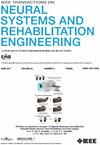步态参数及其变异性对可穿戴传感器跌倒风险评估准确性的影响。
IF 4.8
2区 医学
Q2 ENGINEERING, BIOMEDICAL
IEEE Transactions on Neural Systems and Rehabilitation Engineering
Pub Date : 2025-03-21
DOI:10.1109/TNSRE.2025.3572109
引用次数: 0
摘要
可穿戴传感器越来越多地用于跌倒风险评估,提供精确的跨步时空步态参数,这些参数与跌倒风险增加相关。然而,这些步态参数及其可变性对跌倒风险预测模型的整体准确性的影响仍然是一个悬而未决的问题。本研究引入了三种基本的机器学习模型——逻辑回归、支持向量机(SVM)和人工神经网络——来预测163名体弱老年人的跌倒风险。步态参数及其变异性从脚上安装的惯性测量单元(IMU)收集,并根据步行测试持续时间(从1到15分钟)计算,而不是使用步数,这在实际临床环境中是不切实际的。采用留一交叉验证来评估模型的性能,显示最佳步行测试持续时间为6至10分钟。人工神经网络显示出最高的准确性,在8分钟的测试中获得了0.96分。这些发现为设计使用可穿戴技术进行跌倒风险评估的实验方案提供了重要见解。本文章由计算机程序翻译,如有差异,请以英文原文为准。
Impact of Gait Parameters and Their Variability on Fall Risk Assessment Accuracy Using Wearable Sensor
Wearable sensors are increasingly utilized in fall risk assessments, providing precise stride-to-stride spatiotemporal gait parameters that are correlated with a heightened risk of falls. However, the impact of these gait parameters and their variability on the overall accuracy of fall risk prediction models remains an open question. This study introduced three fundamental machine learning models—logistic regression, support vector machines (SVM), and an artificial neural network—to predict fall risk among 163 frail older adults. Gait parameters and their variability were collected from a foot-mounted inertial measurement unit (IMU) and computed based on walking test durations ranging from 1 to 15 minutes, instead of using stride numbers, which are impractical in real clinical settings. Leave-one-out cross-validation was employed to evaluate the models’ performance, revealing that optimal walking test durations ranged from 6 to 10 minutes. The artificial neural network demonstrated the highest accuracy, achieving a score of 0.96 during an 8-minute test. These findings provide critical insights for designing experimental protocols in fall risk assessments using wearable technology.
求助全文
通过发布文献求助,成功后即可免费获取论文全文。
去求助
来源期刊
CiteScore
8.60
自引率
8.20%
发文量
479
审稿时长
6-12 weeks
期刊介绍:
Rehabilitative and neural aspects of biomedical engineering, including functional electrical stimulation, acoustic dynamics, human performance measurement and analysis, nerve stimulation, electromyography, motor control and stimulation; and hardware and software applications for rehabilitation engineering and assistive devices.

 求助内容:
求助内容: 应助结果提醒方式:
应助结果提醒方式:


